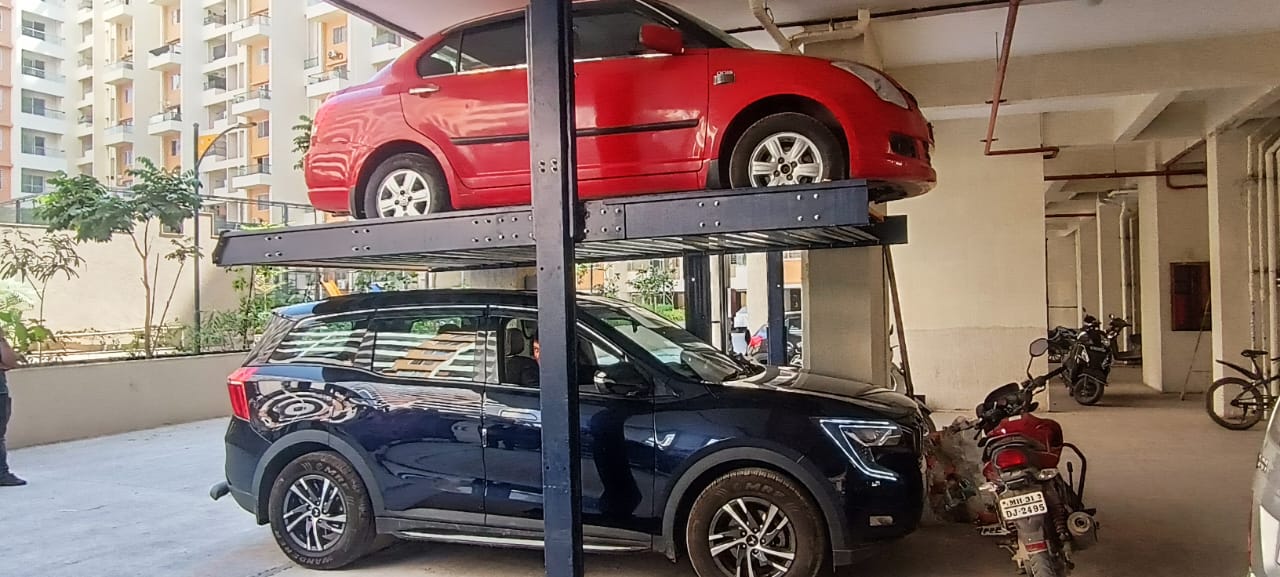In today’s crowded urban environments, the search for parking has become a daily challenge. As cities grow and vehicles multiply, the shortage of parking space has led to congestion, inefficient land use, and frustration. This is where the Car Stack Parking System offers a breakthrough solution maximizing space vertically and transforming how urban areas manage vehicles.
What is a Car Stack Parking System?
A Car Stack Parking System is a vertical parking solution that allows multiple cars to be parked in a single spot, one above the other, using a mechanical or automated lifting mechanism. These systems can be operated manually, semi-automatically, or fully automatically, depending on the configuration and user requirements.
By stacking cars vertically, these systems significantly reduce the space required for parking, making them an ideal solution for residential buildings, commercial centers, and public facilities in densely populated areas.
Why the Demand for Car Stack Parking Systems is Rising
Limited Urban Land
The cost of land in cities is soaring, and space is scarce. Vertical parking systems help developers and property owners make the most of their available square footage.
Increasing Vehicle Ownership
With more people owning private vehicles, the need for smarter parking solutions continues to grow.
Urban Congestion
On-street parking contributes to traffic congestion and limits road functionality. Stack parking systems provide off-street alternatives that are efficient and organized.
Sustainability Goals
By reducing the land footprint and vehicle idling time, stack systems support eco-friendly and low-emission urban environments.
Types of Car Stack Parking Systems
Two-Level Stackers
Simple and cost-effective, suitable for residential complexes or small commercial properties.
Puzzle Parking
Uses a grid system that moves vehicles both horizontally and vertically. Efficient for medium to large facilities.
Rotary Systems
Vehicles are rotated around a central axis, offering compact vertical storage on narrow sites.
Tower and Elevator-Based Systems
Fully automated systems that can park dozens of cars in high-rise structures, often used in malls, airports, and business districts.
Benefits of Car Stack Parking Systems
- Space Optimization: Save up to 70 percent of ground space compared to traditional parking lots.
- Cost Efficiency: Reduce construction costs associated with underground parking or large horizontal plots.
- Improved Safety: Controlled access reduces the risk of vehicle damage or theft.
- Time Savings: Automated systems minimize the time spent searching for a parking spot.
- Smart Integration: Many systems can integrate with apps, license plate recognition, and EV charging ports.
- Environmental Impact: Less driving inside parking lots means lower carbon emissions.
Ideal Use Cases for Car Stack Parking Systems
- Residential Apartments
- Commercial Office Buildings
- Hospitals and Educational Campuses
- Hotels and Shopping Malls
- Public Parking near Transit Hubs
- Government Buildings
These systems are especially beneficial in cities with high population density and limited available land, where conventional parking is no longer feasible.
Global and Indian Trends in Car Stack Parking
Countries like Japan, South Korea, and Germany have long adopted stack parking as a mainstream practice. In India, cities like Mumbai, Delhi, Bengaluru, Pune, and Hyderabad are witnessing a sharp rise in the installation of car stack systems in both private and public projects.
In Mumbai, for instance, high-rise buildings are integrating stack parking into their planning approvals, encouraged by local development control regulations.
Integration with Smart Infrastructure
Today’s Car Stack Parking Systems are no longer mechanical-only setups. Many modern systems feature:
- Mobile-based access and control
- Sensor-based allocation
- Cloud connectivity
- Electric Vehicle (EV) charging points
- Automated billing and reports
These features not only improve user experience but also help building managers and city authorities monitor and optimize usage.
Smarter Parking for Smarter Cities
As urban planning becomes increasingly tech-driven, the Car Stack Parking System is expected to play a critical role in next-generation infrastructure. It aligns with the development goals of smart cities, green buildings, and sustainable transportation networks.
Key trends include:
- AI-assisted parking management
- Solar-powered operation
- Multi-modal transport integration
- Touchless, app-based user experience
Developers and governments who adopt stack parking are not just solving today’s parking problems but also building future-proof infrastructure.
The Car Stack Parking System offers a practical and scalable response to the urban parking crisis. It delivers space, efficiency, safety, and sustainability all within a compact footprint. For modern cities looking to evolve without expanding outward, this system represents a critical step forward in intelligent design and urban mobility.Whether you’re an architect, builder, property owner, or city planner, now is the time to embrace vertical parking and make the most of the space we already have.
